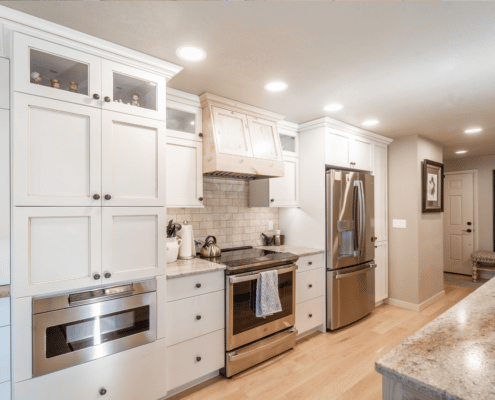Common Roadblocks of Home Remodeling
/in Remodeling General Contractors, Room Additions /by Renaissance RemodelingCommon Roadblocks of Home Remodeling
All kinds of challenges can arise during a home remodel. We’ve selected four of the most common but sometimes unexpected challenges that homeowners can face with any renovation. We hope these tips on The Four P’s of home remodeling can help you feel a bit more prepared for whatever might come your way.
Permits
Doing your home remodel right means obtaining all the needed permits before beginning construction. While a building permit is a standard and expected requirement, additional permits might also be needed. For example, if you live in one of Boise’s beautiful historic districts, you’ll need to go through a review process and acquire an approved Certificate of Appropriateness signed off by the city as a prerequisite to obtaining a building permit. One of the benefits of working with a Design Build company is having the permit process taken care of for you by an expert in the field who knows what the needed permits are for your project and can obtain them as quickly as possible to avoid delays or any issues down the road.
Plumbing
If you want to completely reconfigure the layout of your kitchen or bathroom, be ready for the plumbing expenses. Plumbing can be tricky, and unless you unearth a hidden treasure chest of expensive jewels on demo day, nobody likes surprises during a home remodel. It’s important to keep in mind the likelihood of your plumbing not being up to code if you live in an older house, or that unknown water damage and mold could be present once we start tearing down the walls and flooring and can see what’s hidden underneath. It’s better to find out now that your plumbing needs major updates, instead of finding out with a pipe bursting or other unseen plumbing issues that might be further damaging your home. Although nobody wants to hear that their plumbing expenses are going to be higher than what they had initially hoped, it usually ends up being a blessing in disguise that will save you money and bigger headaches in the long run.
Power
In the last year there has been an influx of requests for home additions and accessory dwelling units in the Boise area. Adding to your home means using more power. When planning a remodel, it’s easy to focus on the more obvious expenses like cabinets, appliances, light fixtures, tile, paint, countertops, oh my! With already so much to consider when making decisions for your project, it’s the behind-the-scenes expenses that can sneak up during renovation. Especially if you live in an older neighborhood like Boise’s North End, or Warm Springs Avenue, a home remodel also comes with considering how much power you need. Replacing electrical panels, poles, or even transformers are expenses that can vastly change the cost of your remodel. It’s important to go with a contractor who has experience with power challenges and addresses them at the beginning of a project instead of leaving room for surprises.
Procrastination
One of the biggest roadblocks in a home remodel can be procrastination. The price of certain materials can go up in as little as a month (hello lumber shortages), and the availability of project start dates can change in an even shorter amount of time. Dragging out your material selections, postponing appointments, or putting off any other design decisions can dramatically alter your project’s expected start date. Once your project begins, making change orders to your remodel’s scope of work can also push out the expected date of completion. We know that remodeling your home comes with big decisions, and changing your mind about some things is inevitable! Working with a contractor that understands your vision and helps you stays on track can make a world of difference.

 Properly defining the scope of work takes a genuine understanding of the customer’s wants and needs, and mindful attention to the details. The scope of work helps establish a budget and time frame and keeps the client and contractor on the same page about what the remodel project will entail. Once the scope of work is agreed upon, we move to the design retainer phase. In this creative phase, the project designer works closely with the client to select colors, fixtures, and materials.
Properly defining the scope of work takes a genuine understanding of the customer’s wants and needs, and mindful attention to the details. The scope of work helps establish a budget and time frame and keeps the client and contractor on the same page about what the remodel project will entail. Once the scope of work is agreed upon, we move to the design retainer phase. In this creative phase, the project designer works closely with the client to select colors, fixtures, and materials.
